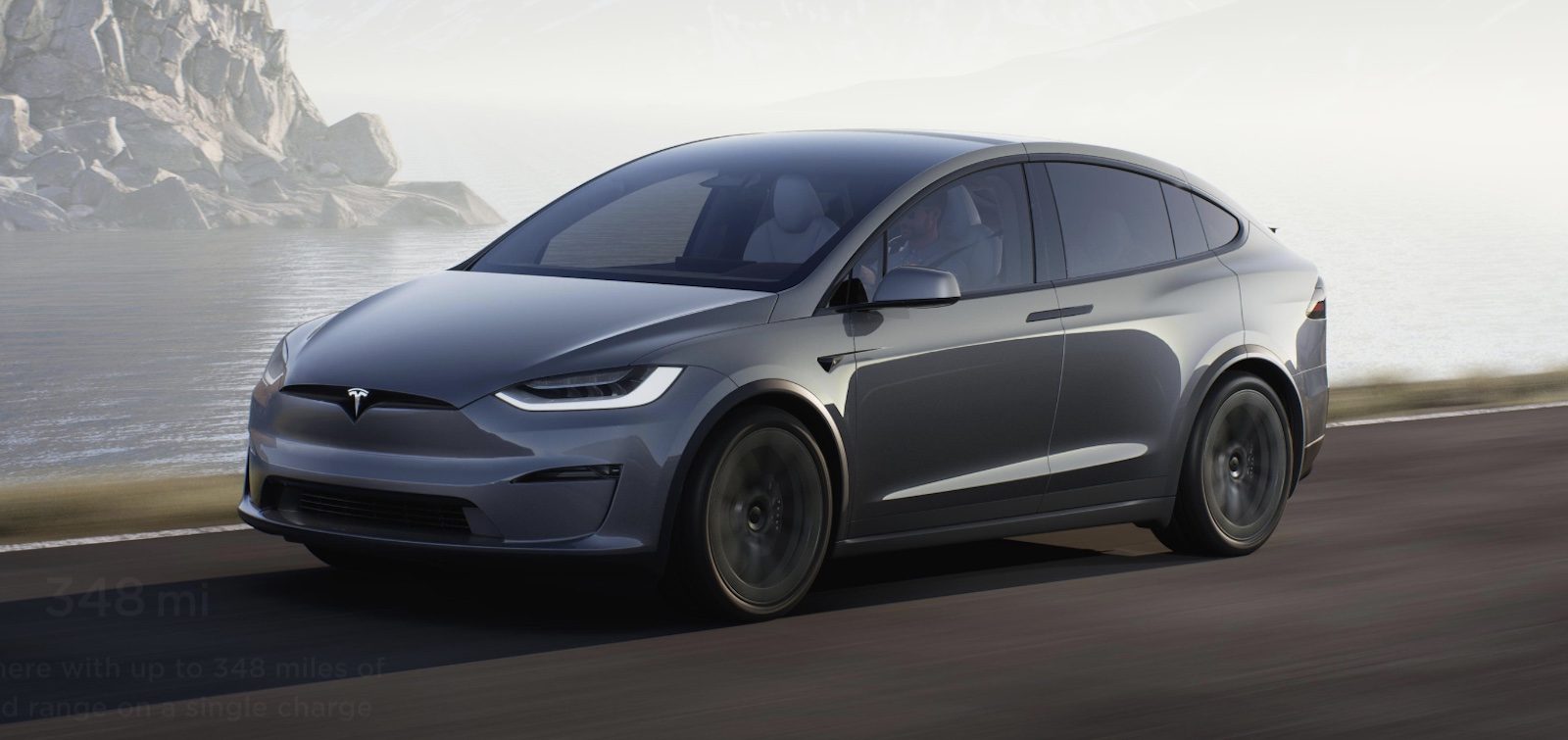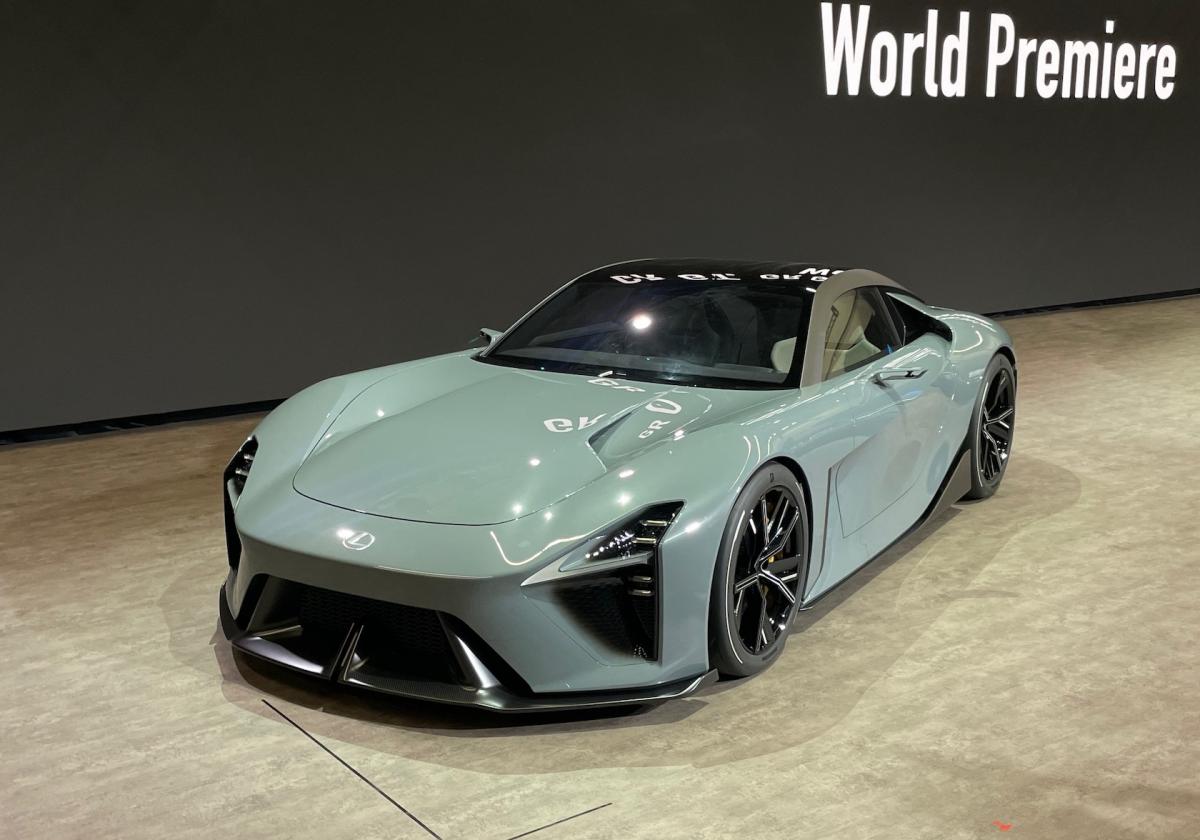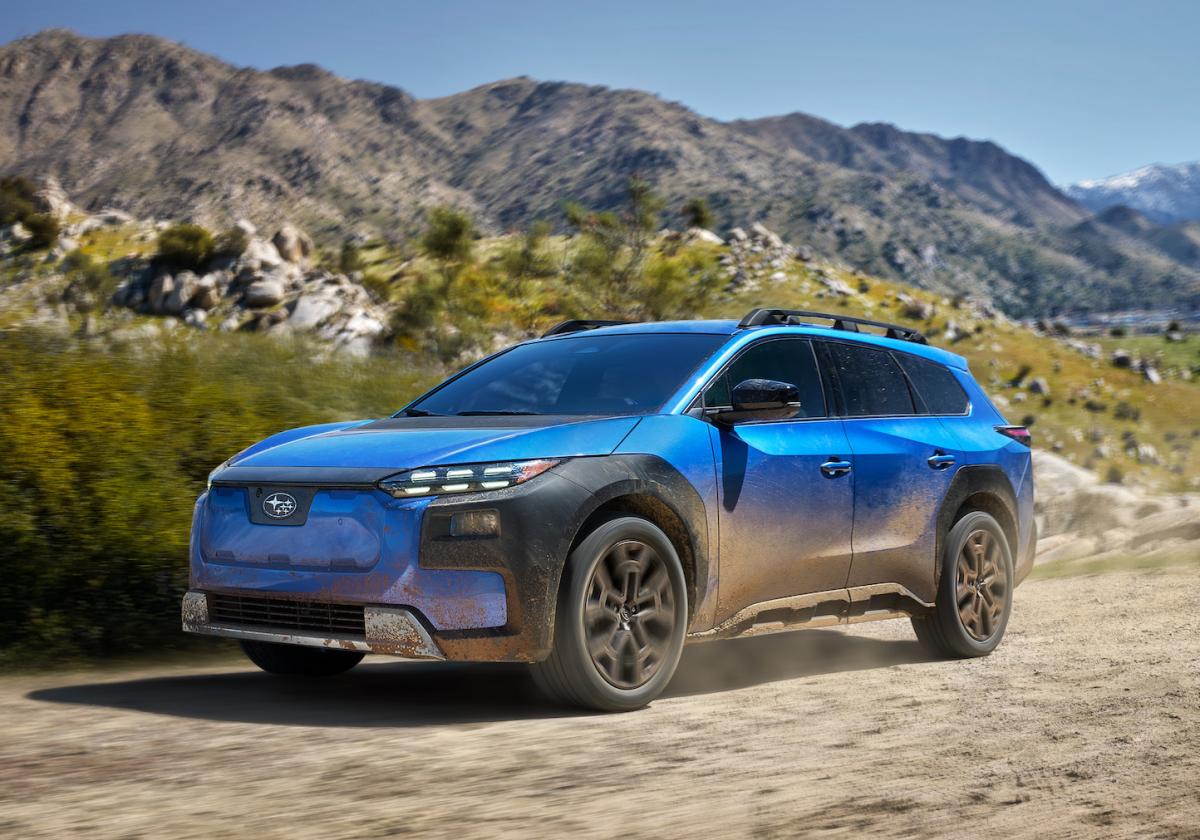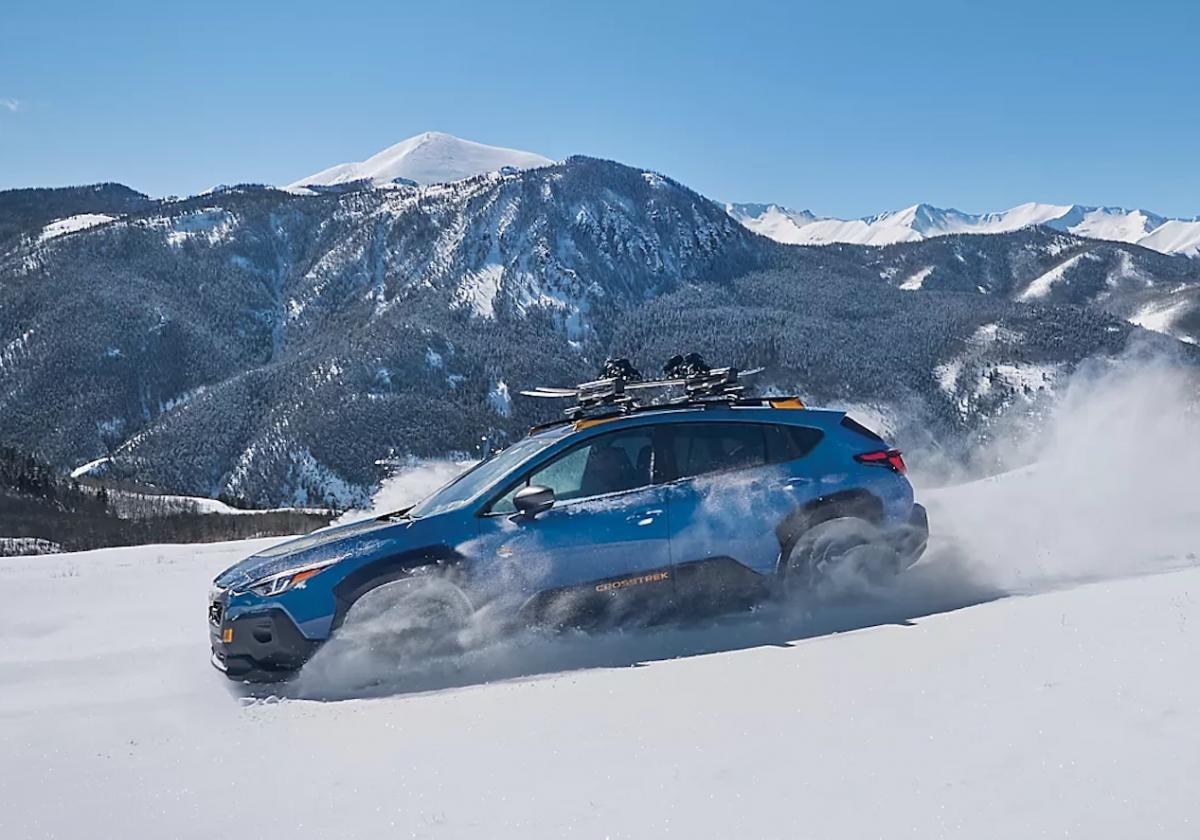- As EV Sales Rise, Tesla’s Market Share Continues To Shrink
- EVs made up 5.6% of all new U.S. car registrations in 2022
- Since January 2022, Tesla’s EV market share plummeted from 72% to 54%
Tesla’s domination of the electric vehicle (EV) market is slowly but surely being eroded away as other local and foreign affordable rivals enter the market.
As the overall EV pie expands, Tesla’s market share continues to shrink.
As of early 2023, EVs accounted for 7% of U.S. new vehicle registrations in January, up from 4.1% in January 2022. This is yet another sign that the EV transition is gaining steam. Such percentage increases clearly show that EVs are not just for early adopters anymore.
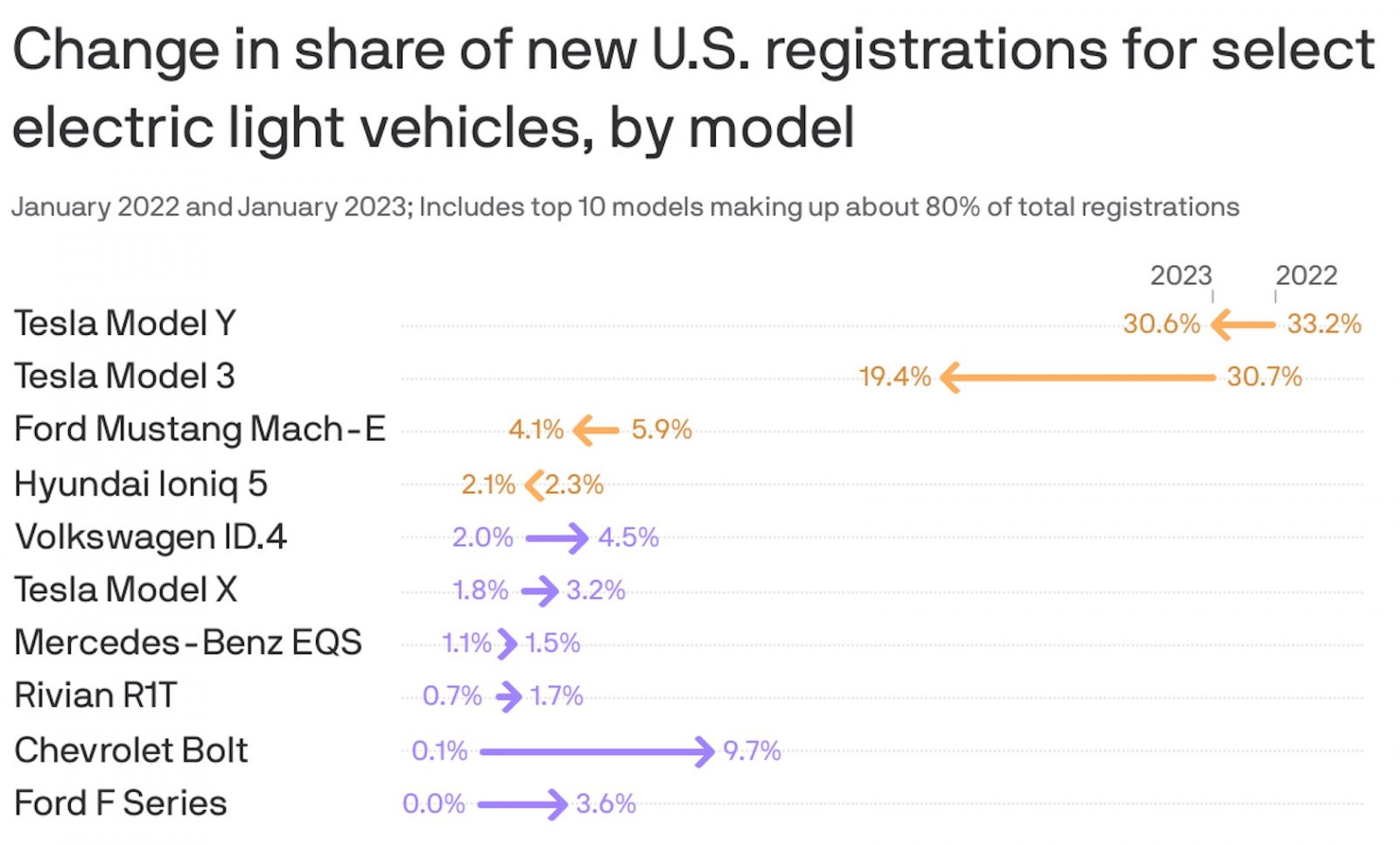
Exposed to a wider EV selection and more affordable prices, mainstream car buyers are increasingly switching from internal combustion engine-powered cars (ICE) to EVs. In the last week of 2022, there were some 47 electric models available for sale in the U.S., up from 33 in 2021.
Using vehicle registration data from S&P Global Mobility, we can see the historic shift away from gasoline cars towards EVs. EVs made up 5.6% of all new U.S. car registrations in 2022. That’s up from 3.1% in 2021 and 1.8% in 2020, but still lags significantly behind China and Europe.
If we look at the latest data, it shows that Tesla still dominates the EV market, but its share continues to shrink as competitors launch new models.
Since January 2022, Tesla’s EV market share plummeted from 72% to 54% — and it will likely fall below 50% by the end of spring, according to S&P Global Mobility. Tesla’s pricey Model S, in particular, has been struggling, as registrations skydived 75% in January 2023, while those of Mercedes-Benz’s new EQS luxury EV sedan quadrupled.
Meanwhile, Tesla’s Model Y and Model 3 continue to hold onto the largest market share and are still growing, but rival marques are progressively slicing into Elon Musk’s electric car pie. The Chevrolet Bolt clings onto its position as the most popular non-Tesla EV, with a 10% share — due in no small part to a $6,000 price cut following a damaging battery recall. Volkswagen’s ID.4 and Ford’s Mustang Mach-E made up the remaining spots in the top five EVs registered in January by market share.
When we speak of the EV market, however, we need to stress that less than 1% of the 279 million cars and light trucks on American roads are electric. Even in California, the country’s leading EV market, they account for just 2.6% of all registered automobiles.
Recent changes to the existing $7,500 tax credit will likely affect the pace of adoption. Existing consumer tax credits for EV purchases are being reworked — again — in part to bolster U.S. manufacturing and reduce reliance on China. Just last Friday, Treasury spelled out how new sourcing requirements for battery components and minerals under the Inflation Reduction Act will be implemented — rules that affect which vehicles will qualify for tax credits moving forward.
Any buyers trying to embrace the $7,500 tax credit before the rules get stricter are likely to find EVs in short supply. Supply is limited because of ongoing supply chain issues and a growing price war triggered by Tesla price cuts in January.
OUR THOUGHTS
Even with all the hoo-hah about EVs and how buyers are progressively switching from ICE to electric, we must remember that under 1% of the 279 million cars and light trucks on American roads are electric. So even as every carmaker boasts about its growing EV lineup, we should keep things real knowing that EVs are still but a drop in the ocean. And when you hone in on the details, it is clear that market leader Tesla is slowly but noticeably losing its market share, a fact that will only continue to accelerate as more affordable rivals debut. It will be fascinating to watch how Tesla strategizes its lineup, what extra price adjustments are coming, and what kind of splash the Cybertruck makes.

